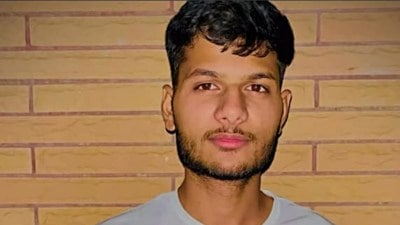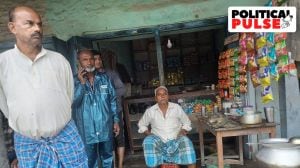Chronic fatigues syndrome
Now that Chhattisgarh, Andhra Pradesh and Maharastra have jointly acted against the Naxal stronghold of Bastar...

Now that Chhattisgarh, Andhra Pradesh and Maharastra have jointly acted against the Naxal stronghold of Bastar, it is an opportune moment to look at what ails the Central forces and the portents for combined operations between state and federal police forces. The Central Reserve Police Force (CRPF), the leading counter-insurgency force of the Indian government, goes out to aid state authorities where local forces are not able to contain the conflict. We can define the risk for the CRPF as a gap between desired preparedness and actual response capabilities. We must see it purely in terms of ‘response capability deficit’. Facing militancy and terrorism is part of the job profile and hence not a threat or risk.
Thus, the risk factors for the CRPF seem very high. Its functionality as an armed force of the Union is circumscribed by the Constitution, which has made policing a state subject. The CRPF has to work within the parameters imposed by state authorities. Lack of clarity over areas of responsibility, scattered deployments, inadequate response from state police forces, lack of local databases, and inadequate policing powers create a zone of risk for the CRPF. Furthermore, being continuously deployed for long periods in difficult areas without rest and recuperation, without periodic training, and with human resources thinly distributed because of the sudden expansion from 133 to 201 battalions has accentuated the organisational strains.
To add to that, the jawans face inequitable career growth, little or no psychological support and the deprivation of all service benefits. Those deployed in troublespots and deprived of family life for the greater part of a year crave for their faraway families. The response capability deficit increases due to these factors. Lack of insurance, risk allowance, adequate posthumous and retirement benefits and disability compensation demoralises them. Dependence on state authorities for logistical support and inhuman living conditions that result from the states’ apathy further reduce the jawan’s response capabilities. Delay in adopting the latest technologies to counter the sophisticated weapons of the target groups is another problem.
Optimising the performance of the various Central forces is a matter of serious concern. Although the Armed Forces Special Powers Act gives them certain autonomous powers, the fact remains that a superstructure with a weak foundation cannot last for long. Local initiative and synergetic responses are the key contributors to effective performance.
Central armed forces cannot assume the role of providing security completely lest it jeopardise state autonomy. Hence, managerially, a system of unified command under the concerned state’s chief executive would create well-integrated security grids. Where these systems are weak or absent the effectiveness of the forces is reduced. A conflict emerges as Central forces are asked to explain the response capability deficit even though deployment and utilisation are often under the state’s control. In many conflict zones, the Central force is used for auxiliary investigation work or for guarding police stations or as a numerical multiplier to local police. Lately, therefore, emphasis is being laid on local capacity building for state police as the Central force model is proving to be a costly experiment.
To conclude, for a counter-insurgency force, the perception of risk must go beyond the nature of the job. Hence the response capability deficit is a better index to assess the risk as seen from various perspectives. The CRPF’s risk profile is vast, but manageable. But if we don’t act soon, the cost in terms of opportunities lost in not managing risks will be heavy.
The writer is Inspector General (Operations) in Force Headquarters, CRPF, New Delhi. These are his own views expressexpressindia.com



- 01
- 02
- 03
- 04
- 05




























